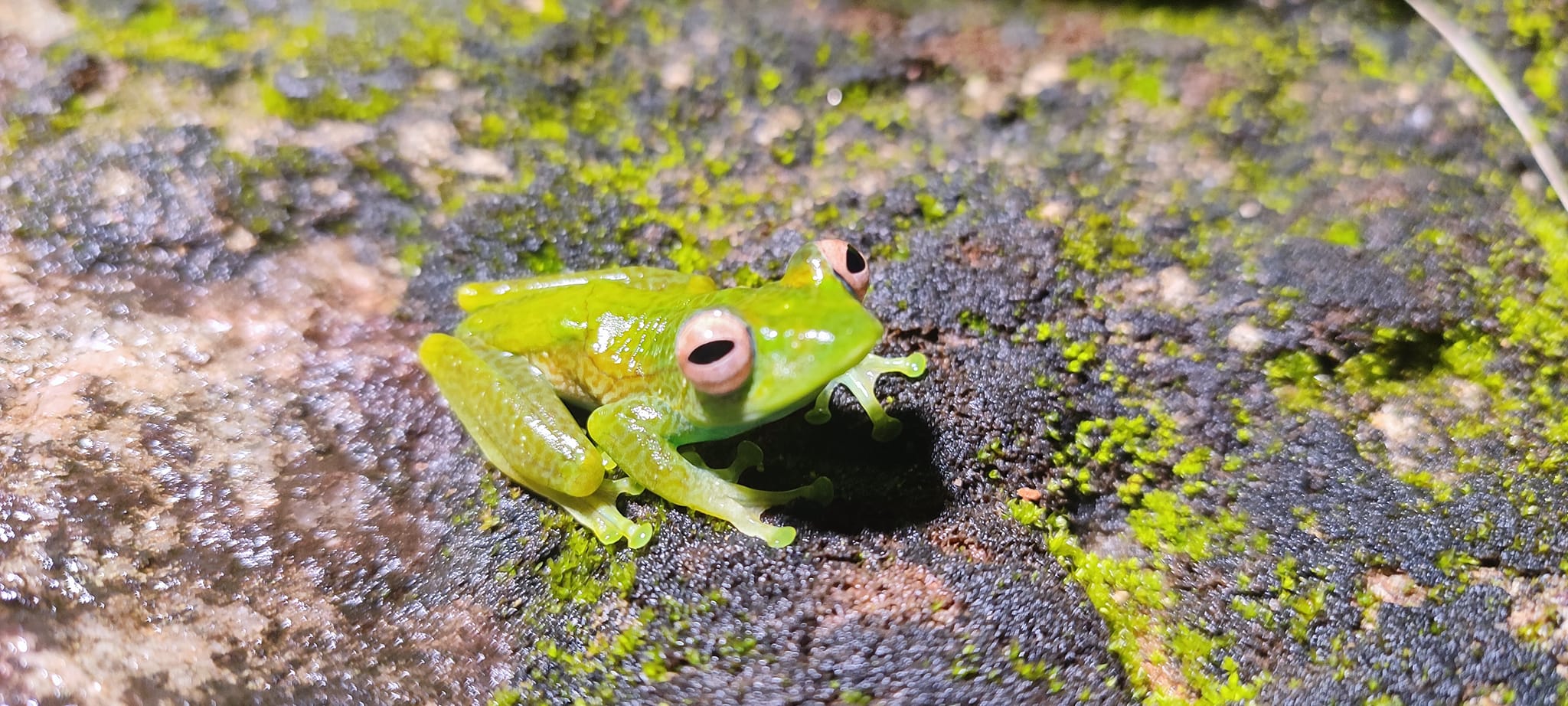Madagascar is beginning to emerge as a destination of choice for nature observation and wildlife photography enthusiasts. Among the subjects of interest, amphibians also occupy an important place for photography and observation. However, it should be noted that frogs are the only amphibians present on the Big Island – there are no others. Madagascar is home to over 300 species of frogs, 90% of which are endemic. The best time to learn about Madagascar’s many batrachian species is from December to March, during the rainy season.
Frog diversity in Madagascar :
Madagascar is home to around 300 species of frogs, over 90% of which are endemic.
Among the most representative families are the Mantellidae, a group of brightly-colored frogs known as “mantella frogs”. These frogs exhibit an incredible variety of sizes, ranging from small to medium, with a head-to-body length of 1.5 to 5 centimeters, although some species can grow much larger. They display a multitude of shapes and colors, including well-known hues like golden orange, blue, yellow, and more subtle patterns of brown and green, which help them blend into their environment or serve as warning signals to predators. These colorful animals produce potent skin toxins that are harmful if ingested.
Madagascar’s frogs can be found in a wide range of habitats, from dense rainforests to dry savannah zones. Some species, such as those in the Boophis genus of the Boophinae subfamily, are arboreal and spend most of their lives in trees. Others, like Scaphiophryne in the Microhylidae family, are terrestrial and primarily inhabit the forest floor. These frogs have developed behavioral and physical adaptations that enable them to survive in a variety of conditions, including some that are extreme.
Ecological importance and conservation :
Frogs play a crucial role in Madagascan ecosystems by functioning as both predators and prey within the food chain, thereby contributing significantly to ecological balance. They primarily consume insects and other small invertebrates, regulating their populations, while also serving as important prey for a diverse array of predators, including birds, snakes, and mammals.
Despite their ecological importance, frog populations face numerous threats. Human activities, including deforestation, habitat fragmentation, pollution, and climate change, pose significant risks to many species. Additionally, the introduction of diseases like chytridiomycosis, a devastating fungal infection, presents a serious threat to amphibian populations.
Efforts have been initiated to protect these vital creatures. Nature reserves and national parks such as Ranomafana National Park and Andasibe-Mantadia National Park, along with private reserves like Peyreiras, have been established to safeguard frog populations and their critical habitats. In many cases, frogs are relatively straightforward to breed, and programs for captive breeding and reintroduction are in place for certain critically endangered species.
Photo : Tsiory Mamisoa/ Wildlife Tour Guide






